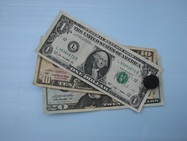
 Most people are aware that United States currency has been printed with magnetic ink, but most really do not know how magnetic it is. This is easy to test and might surprise many skeptics. Simply hold the bill as in photo 2 below and you will see that it is very magnetic. This is more dramatic when using a neodymium (rare earth) magnet, but a regular ceramic magnet will work nearly as well. The magnetic ink has been designed for use in machines that process bills for change and in ATM's. To deter counterfeiters, the bills also have fluorescence, security strips, and the background behind the presidents image has different spacing, as in photo 3. (Left to right, $1, $5, and $10). Counterfeiting money has been around since the beginning of the first striking of coins for commerce. Roman coins have been found that were struck by counterfeiters. The penalty for them was probably death!
0 Comments
This post is about a change in technology yet again. For years we have been used to the .com, .net, .org, and so forth. But, according to the International Domain Name Association, that may soon change. Any combination of Latin letters and numbers can be used as an extension. So, a domain name can be .Pepsi or .Coke or any other name. It can also be applied to entire businesses like .bank, or .market. The downside is that to do so will cost about $185,000. I will keep the .com!
This announcement came as a surprise to me and was not on my radar at all so it bears watching. The post is also subject to update and change as this has just been announced and may be subject to error. But the issue raises another question or two. Who gets to make this decision, and who gets paid? Of course, the customer will eventually pay. Stay tuned and I will update/correct this post as soon as verification is discovered. 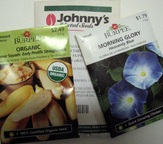 When most people buy seeds to plant for a given year, there is usually a date stamp on the packet that says "for 2011". This leads to the confusion that all seeds have an expiration date and cannot be used next year. Not true at all! I have planted seeds that have been around for ten years. But, that is an extreme case and is not recommended. If you have seeds left over from a previous purchase and want to find out if they will grow, there is an easy test for viability. In this case we just want to know that if they are planted normally, will they germinate? 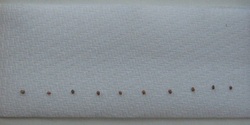 If you have enough seeds to spare, place ten seeds on a folded- over paper towel. In this case there are 10 radish seeds from 2008 that I still have. Fold the paper towel again to cover the seeds and moisten well. Not enough to soak them, but to just moisten. I use ten so that I can have a direct percentage to judge whether or not there is a good reason to plant them. But, if you have fewer seeds, just use two or three seeds. Set the towel in a warm place and continue to moisten periodically for two or three days.  When you open the towel, you should see that the seeds have opened and are sprouting. Of course, they will not grow as there is no nutrient value in a paper towel! In this case, all ten have sprouted and the real seeds can be planted with confidence. It is important to remember that most seeds do not have a 100% germination rate. Some are as low as 60%, but the average is usually around 80%. Bon Appetit! 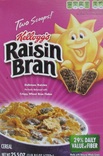 No, its not raisin bran that will be new, but cereal packages may be advertised in a new way. Manufacturers are always looking for a way to attract buyers and they will soon turn to electronics to sell cereal and other products in a new way. I suspect that the sweet kids cereals will be the first experiment. Products have to be eye catching and pop out among other competitors. The current strategy is to use smart graphics to get us to buy one brand over another. Cartoons are, and have been a mainstay, in this effort to attract children. But they will soon be using electroluminescence to make their product literally glow! The cereal box will be printed with an electroluminescent ink that will glow by induction as described in the next photo. 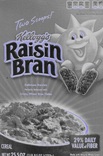 I have had to simulate the effect using Photoshop neon glow, but the idea should be clear. On the shelf just below the cereal, there will be a strip of metal containing wires that generate an alternating current. This current will induce an associated current in the electroluminescent ink, wirelessly, to glow brightly. This is the same way that some devices charge their batteries. For example, electric toothbrushes sit in a holder that recharges the battery wirelessly without any contact. So, watch for the show to begin fairly soon. When they can get supermarkets to try it and the cereal flies off the shelves, it will be everywhere. If it costs too much to try, it will fail. The problem as I see it, is that when you get the box home it will no longer be a novelty. It may just be another FAD, (For A Day). |
AuthorThe author has an eclectic background in chemistry, electronics, writing, mental health, and community action...Ken Archives
June 2021
|

 RSS Feed
RSS Feed
